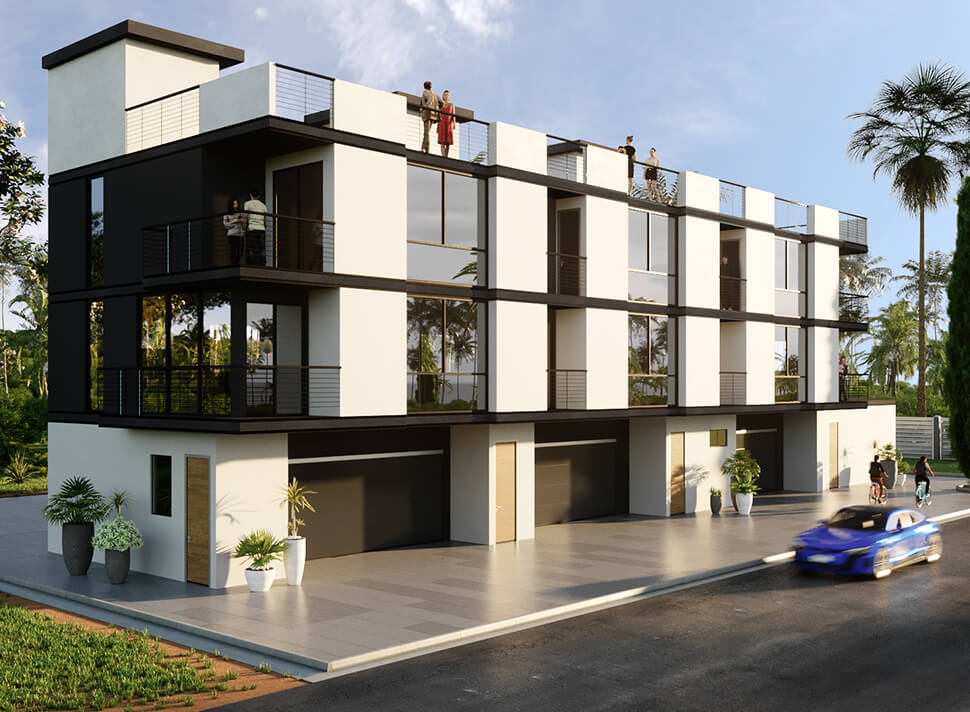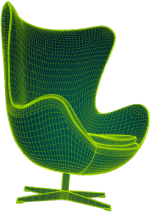Unveiling the Arsenal: Must-Have Tools for Effective 3D Product Rendering
3D product rendering has emerged as a cornerstone of modern marketing and product development in the ever-evolving digital design landscape. This sophisticated technique allows businesses to create hyper-realistic images of their products before they exist in the physical world. As we delve into 3D product rendering, we'll explore the essential tools that are revolutionizing the industry and pushing the boundaries of what's possible in digital visualization.
The global 3D rendering market is projected to reach a staggering $6.87 billion by 2027, growing at a CAGR of 20.1% from 2020 to 2027. This explosive growth is fueled by the increasing demand for high-quality visual content across various sectors, including e-commerce, architecture, and entertainment. As the stakes rise, so does the need for cutting-edge tools to deliver stunning results efficiently and cost-effectively.
The Foundation: Hardware Requirements
A powerful computer system is at the heart of every 3D product rendering setup. Rendering complex 3D models requires substantial processing power and memory. A high-performance CPU, such as the AMD Ryzen 9 5950X or Intel Core i9-11900K, forms the backbone of any severe rendering rig. These processors boast up to 16 cores and 32 threads, allowing for simultaneous processing of multiple rendering tasks.

Image from Yousee Studio
Graphics processing units (GPUs) are equally crucial in 3D rendering. NVIDIA's RTX 3090 and AMD's Radeon RX 6900 XT are top-tier choices, offering 24GB and 16GB of VRAM, respectively. These GPUs can easily handle complex textures and lighting calculations, significantly reducing rendering times.
Memory is another critical component, with 64GB of RAM being the minimum recommended for professional work. For larger projects, 128GB or even 256GB of RAM may be necessary to handle the massive datasets involved in high-resolution renders.
Storage solutions are often overlooked but are vital for a smooth workflow. An ideal combination of fast NVMe SSDs for active projects and large-capacity HDDs for archiving is a 2TB NVMe SSD that can provide read/write speeds of up to 7000MB/s, ensuring minimal loading times for large texture files and 3D models.
Software Suites: The Digital Sculptor's Toolkit
While hardware provides the raw power, software is where the magic happens in 3D product rendering. The market is flooded with options, each with its unique strengths and specializations. Here's a deep dive into some of the most influential and versatile tools available:
- Autodesk Maya: A 3D modeling, animation, and rendering industry standard. Maya's strength lies in its comprehensive toolset and extensibility through plugins. Its Bifrost framework allows for complex simulations, making it ideal for creating realistic product animations.
- Blender: This open-source powerhouse has gained significant traction in recent years. Blender's Cycles render engine produces stunning photorealistic results, while its Eevee engine offers real-time rendering capabilities. At $0, it's an attractive option for startups and freelancers.
- KeyShot: Renowned for its user-friendly interface and real-time rendering capabilities, KeyShot is a favorite among product designers. Its material library contains over 1,000 scientifically accurate materials, ensuring that rendered products look exactly as they would in real life.
- V-Ray: This versatile rendering engine integrates with multiple 3D modeling software and is known for its speed and photorealistic output. V-Ray's adaptive dome light feature simulates real-world lighting conditions with unprecedented accuracy.
- Corona Renderer: Originally developed for architectural visualization, Corona has found a home in product rendering due to its intuitive workflow and excellent material system. Its unique denoising technology can reduce render times by up to 50% without sacrificing quality.
Texture and Material Libraries: The Devil in the Details
The realism of a 3D-rendered product often hinges on the quality of its textures and materials. While creating custom textures is possible, it's time-consuming and requires specialized skills. This is where texture and material libraries come into play:
- Poliigon: Offers over 12,000 high-quality textures, materials, and 3D models. Their 8K resolution textures ensure that even close-up renders maintain their crispness and detail.
- Quixel Megascans: Known for its photogrammetry-based assets, Megascans provides ultra-realistic textures and 3D scans of real-world objects. Their library includes over 16,000 assets, from natural surfaces to artificial materials.
- Substance Source: This library, part of the Adobe Substance 3D suite, offers over 4,000 customizable materials. Its procedural textures can be adjusted on the fly, allowing infinite variations.
Lighting: Illuminating the Virtual Studio
Lighting can make or break a 3D product render. While software-based lighting solutions have come a long way, some specialized tools can elevate your lighting game:
- HDR Light Studio: This standalone application allows for precise control over lighting in 3D scenes. It integrates with most major 3D software and offers a library of over 1,000 HDR environments.
- HDRI Haven: A free resource offering high-quality HDR images for 3D rendering. With resolutions up to 16K, these images provide realistic environmental lighting for product renders.

Image from Yousee Studio
Post-Processing: The Final Touch
After the initial render, post-processing can add that extra layer of polish to your 3D product renderings:
- Adobe Photoshop: The industry standard for image editing, Photoshop allows for fine-tuning colors, contrast, and other visual elements. Its extensive plugin ecosystem extends its capabilities even further.
- DaVinci Resolve: While primarily known as a video editing tool, Resolve's color grading capabilities are second to none. It can work with high-bit-depth images, preserving the quality of your renders throughout the post-processing stage.
Collaboration and Project Management
In the fast-paced world of product development, efficient collaboration is crucial. Tools like Autodesk's Shotgun (now known as ShotGrid) provide a centralized platform for project management, asset tracking, and review processes. It allows teams to streamline workflow, reducing miscommunication and accelerating project timelines.
Platforms like Trello or Asana can help smaller teams or freelancers manage projects and track progress. While not specific to 3D rendering, these tools can significantly improve productivity and organization.
Render Farms: Harnessing the Cloud
More than local rendering may be required for complex projects with tight deadlines. This is where render farms come into play. Services like RebusFarm or Ranch Computing offer access to vast networks of high-performance computers, allowing for rapidly rendering even the most complex scenes.
These services operate on a pay-per-use model, with costs typically ranging from $0.05 to $0.15 per GHz-hour. While this may seem expensive, saving time can often justify the price, especially for time-sensitive projects.
Emerging Technologies: The Next Frontier
As we look to the future of 3D product rendering, several emerging technologies are poised to reshape the industry:
- Real-time Ray Tracing: While still in its infancy, real-time ray tracing promises to revolutionize the rendering process. NVIDIA's RTX technology is at the forefront of this revolution, allowing instant feedback on lighting and material changes.
- AI-powered Denoising: Machine learning algorithms are being employed to dramatically reduce render times. Tools like NVIDIA's OptiX AI-Accelerated Denoiser can produce clean images from noisy renders in a fraction of the time traditional methods require.
- Virtual Reality Integration: VR tools like Gravity Sketch allow designers to sculpt and manipulate 3D models in a virtual environment, providing an intuitive and immersive design experience.
As we've explored, the world of 3D product rendering is vast and complex, with many tools available to tackle every aspect of the process. From powerful hardware setups to sophisticated software suites, from extensive texture libraries to cutting-edge lighting solutions, the modern 3D artist has an arsenal of tools that would have been unimaginable just a decade ago.

Image from Yousee Studio
The key to success in this field is mastering these tools individually and understanding how they interconnect and complement each other. A well-optimized workflow that leverages the strengths of each tool can dramatically improve efficiency and output quality.
As technology continues to evolve at a breakneck pace, staying updated with the latest tools and techniques is crucial. The most successful 3D artists and studios can adapt quickly, integrating new technologies into their workflow as they emerge.
In conclusion, while the tools discussed here form a solid foundation for effective 3D product rendering, they represent just the tip of the iceberg. The field is constantly evolving, with new tools and techniques emerging regularly. By staying curious, experimenting with the latest technologies, and continuously refining their craft, 3D artists can push the boundaries of what's possible in product visualization, creating stunning images that captivate audiences and drive business success.
Contact us at YouSee Studio for captivating 3D renderings and immersive virtual experiences.
Ray Lisbon is a content writer and the author of this article.






